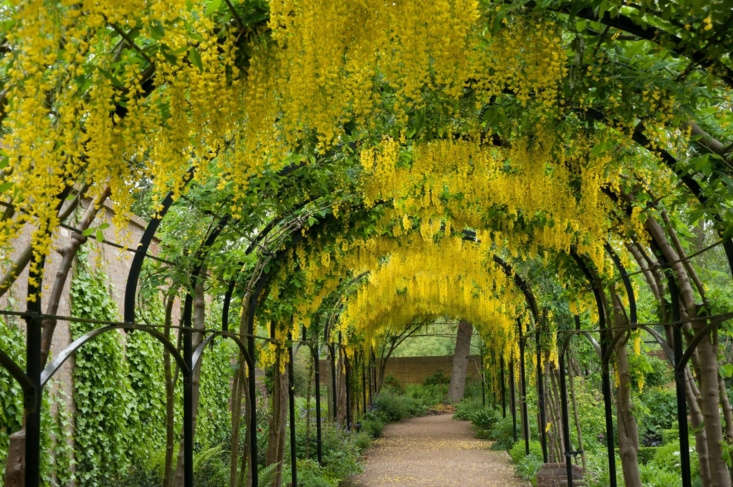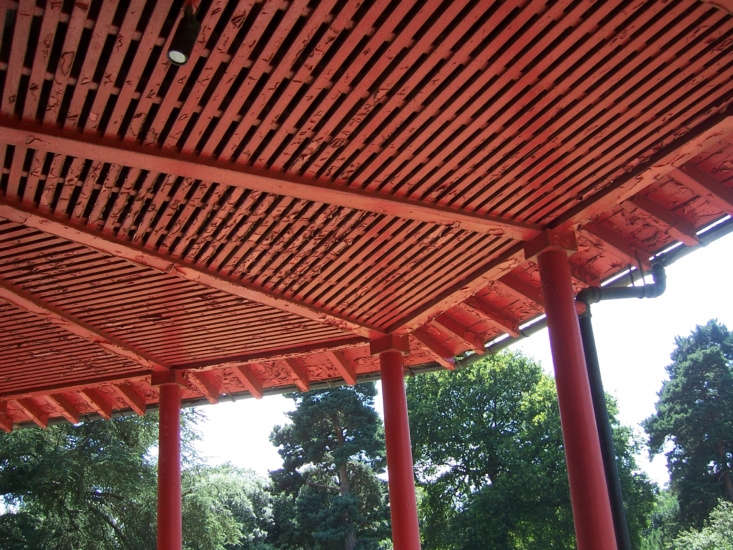As the world’s most famous botanical garden, Kew is an awe-inspiring place to visit with vast glasshouses (the newly restored Temperate House which was originally built over four decades, opening in 1863, covers 4,880 square meters) and incredible collections. It oversees the biggest and most diverse collection of plants on the planet. It’s not only the jewel in the crown of London’s many green spaces, it’s also a World Heritage site. Among the 300 acres of awe-inspiring glasshouses and follies, temples, and towering trees, a pagoda and a palace, there are ideas for all sorts of outside spaces. Here are some of our favorites.
Build a Collection

As one of the Royal Botanic Gardens, Kew holds many important collections from botanical illustration to the 7 million items in the herbarium. Consider that encouragement to start your own living collection. In the Princess of Wales conservatory there are 10 climatic zones housing ferns and orchids through to arid-loving plants such as cacti, agave and aloe. Start your own mini collection and display them together on a plant stand, grouping plants with similar needs in the same spot.
Go Yellow

The dazzling laburnum tunnel in the Queen’s Garden (which is exclusively filled with plants grown in Britain before and during the 17th century) is one of Kew’s most breathtaking features. The acidic yellow flowers, which emerge in spring, look incredible underplanted with purple alliums. And this can be re-created on a much smaller scale with a garden pergola or a series of arches.
Make a Meadow

Bulbs are planted into grass at Kew: From elegant blue camassias to technicolor tulips, these bright additions to lawns and meadows are a welcome injection of springtime color. Plant bulbs in autumn and then do not cut the grass until all bulb foliage has died back in early summer. The longer grass will also provide wildlife habitats for many insects.
Widen Your Borders

Deep borders, in which you can create layers of planting, offer much more impact than skinnier ones. The Great Broad Walk takes this concept to extremes with a double herbaceous border that contains 30,000 plants and 13,000 spring bulbs. It’s not only super wide but extremely long too—at 320 meters it’s Britain’s longest double herbaceous border. But a deeper border works on any scale; removing turf from gardens to give borders more room to breathe is a quick and easy job.
Cultivate Climbers

You don’t need a beautiful old wall to enjoy the abundant flowers of wisteria. Encase a gazebo with vivid blue Wisteria sinensis; at Kew, an ancient specimen—which is more than 200 years old—twists and climbs around a gazebo creating a secluded, and highly scented, seating area.
Gather Your Alpines

Take inspiration from Kew’s modern glass Alpine House and grow a miniature collection of alpine plants. These mountain-growing plants including gentians, rosemary, saxifrage, and peonies like cool conditions, plenty of light, and good ventilation, so display your pots in a cool zone or keep them partially shaded from harsh summer sun.
Plant a Tree or Plant a Few

Kew is famous for many things, but the 14,000 trees are arguably the site’s most impressive assets and some are centuries old including a Japanese pagoda tree (Styphnolobium japonicum), a Lucombe oak (Quercus x hispanica ‘Lucombeana’), and the black locust tree (Robinia pseudoacacia). You don’t need an arboretum (or much space) to plant a tree, but if you’re making a commitment to grow a tree (which will almost certainly be enjoyed by future generations) it’s worth seeking the best cultivars for each variety.
Be Brave with Color

You don’t need to go to the great heights of Kew’s famous 10-story Pagoda (the 1762 structure reopens this summer after a major restoration) to add a whimsical pop of color in the garden. Paint wooden furniture in a glossy Chinoiserie red to create vibrancy that will work in all seasons.
Go Tropical

Kew’s Palm House—and the newly restored Temperate House—are feats of Victorian engineering and awe-inspiring structures in their own right. They also show just how lush and invigorating the leaves of tropical plants can look en masse but you don’t need a Victorian glasshouse to re-create it. Plenty of exotic-looking plants with gorgeous foliage can survive moderate winters outside: Trachycarpus, Cordyline, banana plants, Fatsia japonica, and Phormium can be layered in a sheltered spot to create a tropical look.
Illuminate Your Trees

Visitor’s to Kew’s spectacular winter trail will be well versed in how dazzling a well-appointed beam of light can be when shone up into trees, and you don’t need mature trees to do it. Even a young multi-stem tree—or group of trees—can be shown off to dazzling effect at night with a well-placed up-lighter.
For more help designing a garden, see our Garden Design 101 guides to Hardscapes 101 as well as curated guides to our favorite Trees, Perennials, and Tropical Plants. See more ideas to steal:
- 10 Ideas to Steal from Organic Gardens Around the World
- 10 Ideas to Steal from Midcentury Modern Gardens
- 10 Garden Ideas to Steal from Scotland






Have a Question or Comment About This Post?
Join the conversation